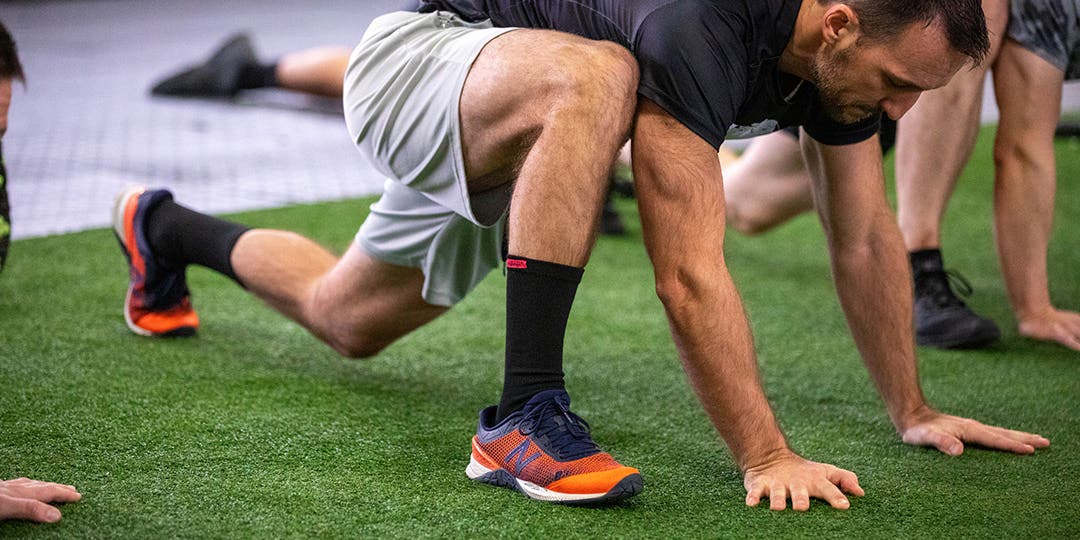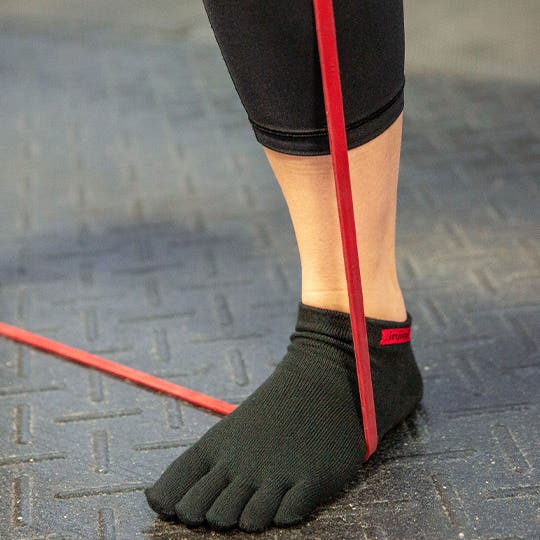When you are a runner, you don’t just run. There are many other variables that tie into the sport such as mobility, nutrition, strength training, recovery, and rest. To prevent injuries and have a solid run, you always want to start with a proper active warm up and stretch. After every run, it is important to do a cool down and have a dedicated time to fit in stretching and mobility techniques.


Warm-Up
Some of the benefits of adding a warmup to your workout include increasing the blood flow through your muscles, increasing your heart rate to help prepare your cardiovascular system, increasing the speed of nerve impulses or your muscle movement, and decreasing the risk of injury.
There are two main phases to the warm-up:
1. Aerobic - walking, jogging, static bike, rower, jumping rope for 5-10 minutes.
2. Activation movements - 5-10 minutes of dynamic stretching and range of motion exercises.
Stretching
Always warm up before stretching and move into each stretch slowly. Breath through your stretch and exhale during the most intense part.
There are two types of stretching for runners:
1. Dynamic stretching - to be done after your warmup but before your workout. Movements can include leg swings, knee grab variations, butt kickers, frankensteins, walking lunges, high knees, karaokes, skipping, and air squats.
2. Static stretching - to be done after your cool down with a static hold of 60 seconds each stretch. Body parts to be stretched should include your quads, calves, hamstrings, IT band, hips, back, arms and abs.
Cool-Down
The main benefits of the cool-down are to reduce muscle soreness, promote the removal of waste products, and decrease the chances of blood pooling in the lower extremities. This could easily be a 10–20-minute easy run or walk after your main workout to bring the body down to a “cooling place.”
Mobility
This is the most important aspect for runners and the most ignored part of a running program. Mobility includes a variety of certain exercises, usually prescribed and demonstrated by a Physical Therapist or Personal Trainer, or by using certain tools such as a foam roller, voodoo floss or massage gun. Some examples of these exercises are yoga holds, such as downward facing dog and pigeon, clam shells, lunge rotations, dead bugs, hollow holds, supine hip rotation and ankle walls.
Mobility Tools
- Foam Roller: Foam rolling is a form of myofascial release that restores movement and treats injured areas. It is known to help decrease muscle soreness after running, prevents further injury, improves flexibility, and reduces muscle pain.
- Voodoo Floss: A compression type band made out of latex rubber improves range of motion (ROM), restores joint mechanics, and compresses swelling out of tissues and joints. It wraps around an area tightly (calf, arm, quad, etc), and creates friction between the muscle fibers to help break up scar tissue, lactic acid and any other waste in those tiny places that a foam roller or lacrosse ball can’t get to.
- Massage Gun: Great for recovery or a warm up before your run. Use prior to your stretch routine for a more effective stretch session, a larger range of motion and in less time than other massage tools. With attachments in different sizes and shapes, you can get in every nook and cranny needed.
- Lacrosse Ball: Can be used for self-myofascial release that breaks up the connective tissue surrounding your muscles in spots that again a foam roller can’t get to. Extremely helpful in areas that get rigid from not just exercise, but poor posture and sitting for too long (think driving or at your desk). A great way to massage your feet, legs, arms, back, shoulders, etc.
- Calf Stick: This tool increases flexibility, speeds up recovery time, and reduces muscle soreness. It can be used as a self-massage tool easily on your legs and works quickly! (You will see them a lot at aid stations and in drop bags at ultra-races).


By implementing proper warm up, stretching and mobility techniques, you will see improvements immediately to your recovery time, amount of muscle soreness and range of motion. It is recommended to dedicate 20-30 minutes of mobility after every workout, whether you are injured, tight or feeling good. These important movements will keep you injury free and on the trails running longer and stronger. Ready to upgrade your workouts? Whether it is stretching, yoga, runs or HIIT workout, any Injinji sock would be a perfect addition to your workout! See our new arrivals here.
